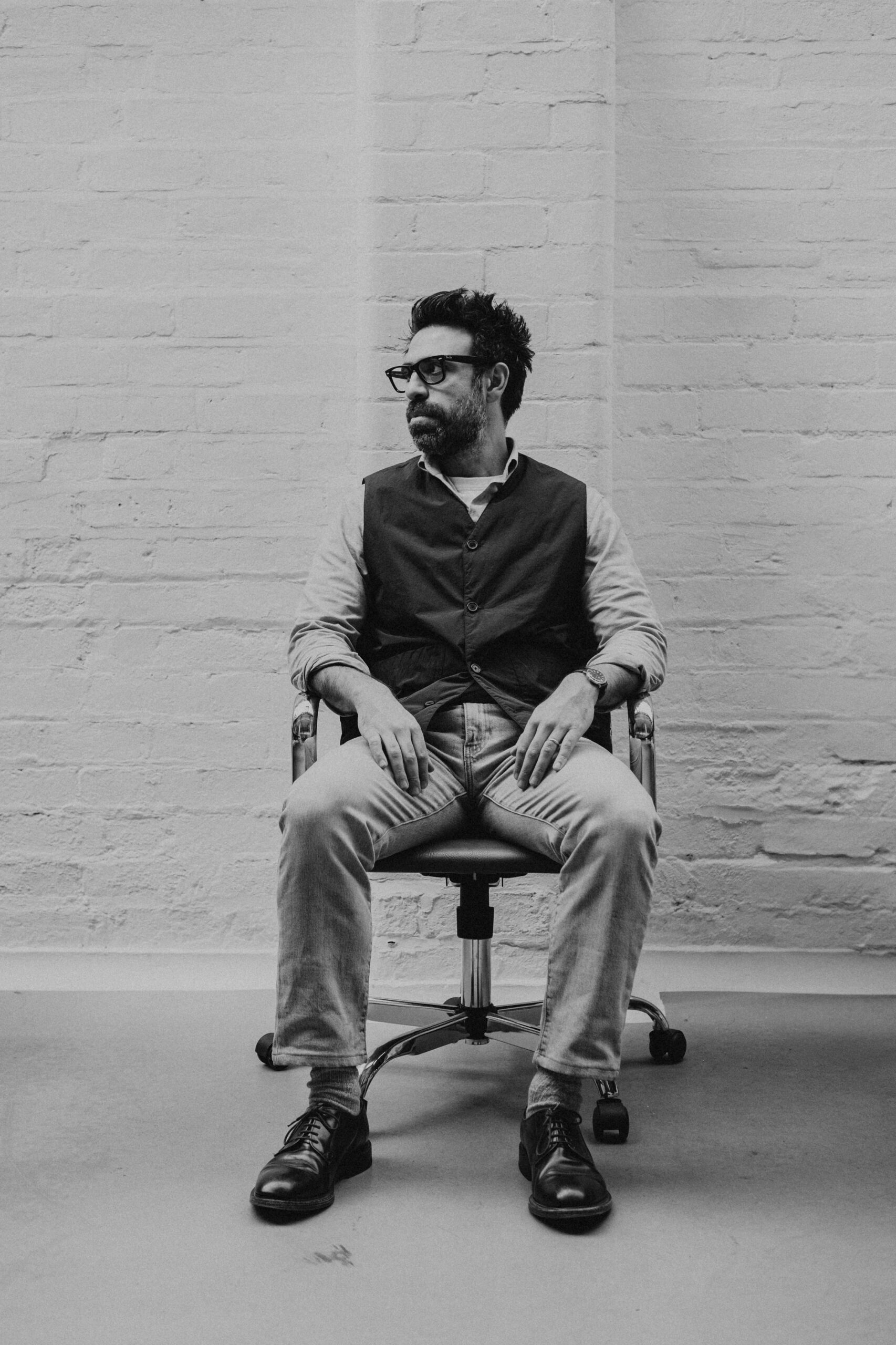Design is changing faster than ever, and 2025 will demand more from businesses than simply looking good. The brands that thrive are those that adapt, blending creativity with technology and strategy at every step.
Take Apple for example. By putting design at the heart of their business, they transformed everyday products into icons that customers love.
When you develop design with purpose, you unlock real benefits: stronger brand perception, smoother operations, and a true competitive edge.
This guide will walk you through every phase needed to develop design systems for success in 2025. We’ll cover the latest trends, key development stages, building the right team, harnessing technology, and how to measure your impact.
Understanding the Evolving Landscape of Design in 2025
The way we develop design in 2025 is nothing like it was a decade ago. Imagine a team at a fast-growing startup, once focused on making things look good, now sitting at the heart of every business decision. This shift is not just cosmetic. It is a strategic transformation that touches every layer of an organization.
Designers today are storytellers, strategists, and problem-solvers rolled into one. They are asked to look beyond the surface, to create experiences that connect with real human needs. The result? Businesses that develop design as a core function see not only happier users but healthier bottom lines.
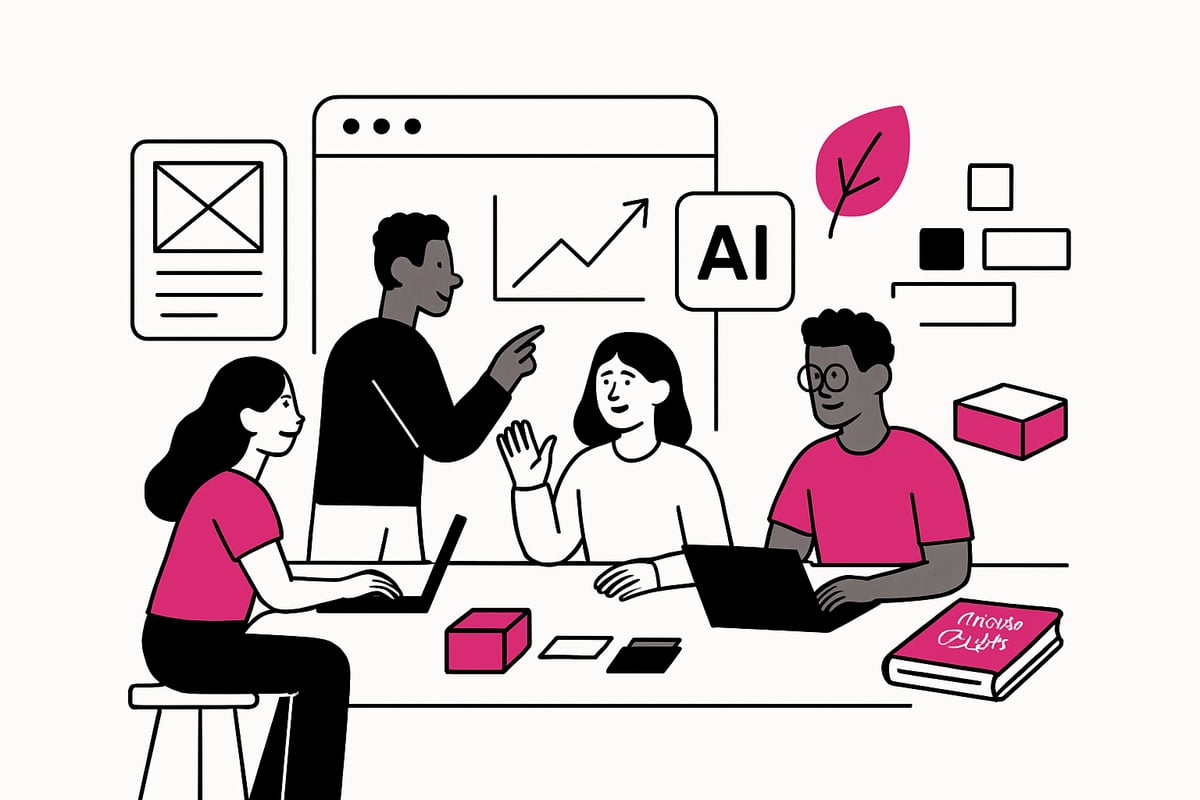
Key Shifts in Design Thinking
Not long ago, design was an afterthought, reserved for final touches. Now, to develop design means to shape strategy from day one. Organizations have realized that design is the bridge between business goals and user experiences.
User-centric and human-centered approaches are no longer buzzwords; they are necessities. Teams dive deep into user journeys, asking, “What does our audience truly need?” According to recent industry reports, investment in design as a growth lever has skyrocketed. In fact, companies that integrate design with business objectives and measurable outcomes see remarkable results.
Consider a global retailer that restructured around design-led innovation. By embedding design thinking into every department, they reported a 15% increase in annual profits. This is not an isolated story. Across industries, the push to develop design as a strategic driver is transforming outcomes.
Let’s break down the impact:
| Aspect | Traditional Approach | 2025 Approach |
|---|---|---|
| Focus | Aesthetics | Strategy and Outcomes |
| User Involvement | Minimal | Deeply Integrated |
| ROI Measurement | Rare | Standard Practice |
Design is now synonymous with business growth.
Trends Shaping Design Success in 2025
Several forces are reshaping how teams develop design for lasting success. Artificial intelligence and automation have become powerful allies. Digital collaboration tools are now the backbone of creative work, making it possible for teams scattered across the globe to co-create in real time.
Sustainability and ethics are no longer optional. In 2024, over 70% of successful brands listed sustainability as a top design priority. Teams are challenged to create products and systems that are not only beautiful but responsible and enduring.
Another trend is the rise of cross-disciplinary teams. Designers, strategists, technologists, and business minds now blur traditional boundaries. This approach encourages innovation and accelerates project timelines.
Adaptable, modular design systems are also taking center stage. These systems offer the flexibility to scale and evolve, ensuring longevity in a fast-paced market. For a deeper dive into these global shifts, the iF Design Trend Report 2025 provides comprehensive analysis and examples.
Successful organizations develop design practices that anticipate change and respond with agility.
The Strategic Value of Design Systems
To develop design at scale, organizations are turning to robust design systems. What is a design system? It is a living library of patterns, principles, and assets that ensures every touchpoint feels cohesive and intentional.
Consistency is the most visible benefit. Whether a user interacts with your website, app, or physical product, a design system keeps the experience seamless. These systems also speed up development time and boost quality. Teams spend less time reinventing the wheel and more time innovating.
Case studies show that companies with mature design systems deliver projects 30% faster. The ability to develop design efficiently often determines who leads and who lags in the market.
In summary, the evolving landscape demands that businesses invest in strategic, user-focused, and sustainable ways to develop design. Those who do will not just keep up—they will define the future.
The Core Phases of Design Development for Success
Every story of remarkable design begins with a process, not a single spark of inspiration. To develop design that truly drives business success in 2025, organizations must follow a series of strategic phases. Each phase builds on the last, weaving together research, creativity, rigor, and reflection.
Let’s walk through the five core phases of design development, each one a chapter in the journey toward a solution that not only looks good but works beautifully.
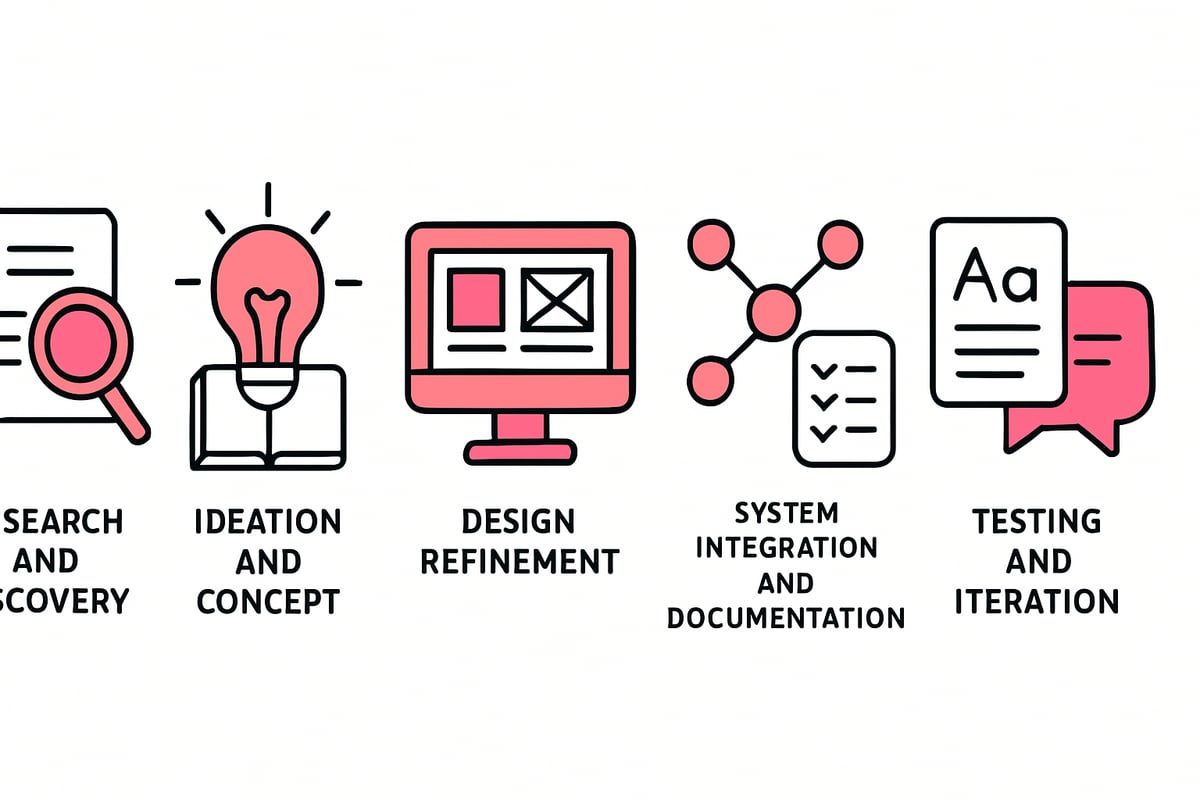
Phase 1: Research and Discovery
The journey to develop design that lasts starts with understanding. In this phase, teams dig deep into business goals, user needs, and the competitive landscape. They conduct stakeholder interviews, analyze competitors, and perform user research to reveal insights that guide every decision.
- Stakeholder interviews uncover strategic objectives.
- Competitor analysis exposes industry gaps and opportunities.
- User research brings real needs and pain points to light.
Consider a project where the discovery phase unveiled a misalignment between what users wanted and what the business offered. By pausing to develop design rooted in research, the team avoided costly missteps, ultimately creating a product that resonated with its audience.
Phase 2: Ideation and Concept Development
With insights in hand, it’s time to unleash creativity. Teams host brainstorming sessions, sketch ideas, and build quick prototypes. Here, divergent thinking encourages wild ideas, while convergent thinking refines them into actionable concepts.
Collaboration is key. When designers, strategists, and engineers come together early, they develop design solutions that are both innovative and feasible. For example, a cross-functional team that shared ideas openly avoided late-stage rework, saving time and budget.
- Structured brainstorming generates a wealth of possibilities.
- Prototyping brings concepts to life quickly.
- Early feedback ensures alignment across disciplines.
This phase is where the seeds of breakthrough solutions are planted and nurtured.
Phase 3: Design Refinement and Detailing
Now, ideas transform into detailed plans. Teams create wireframes, mockups, and specifications, ensuring that every detail serves both user experience and technical requirements. This is the phase where teams develop design with precision, catching errors before they become expensive problems.
Research shows that 60% of design errors are caught during refinement, dramatically reducing future costs. Teams scrutinize every aspect, from color choices to navigation flow, and work closely with engineers to guarantee feasibility.
- Wireframes map out structure and interactions.
- Mockups visualize final aesthetics.
- Detailed specs bridge the gap between vision and execution.
By investing time here, organizations elevate quality and set the stage for smooth implementation.
Phase 4: System Integration and Documentation
With the refined design in hand, coordination becomes the focus. Teams integrate solutions across architecture, engineering, and digital platforms, ensuring consistency at every touchpoint. Comprehensive documentation, such as style guides and prototypes, supports this integration.
Collaboration tools like BIM and Figma streamline the process. For inspiration, explore Design System Case Studies to see how leading firms develop design systems that scale and adapt.
- Style guides document brand elements for future use.
- Specifications provide clarity for all contributors.
- Prototypes offer tangible references for development.
Seamless integration and clear documentation build a foundation for consistent, high-quality results.
Phase 5: Testing, Review, and Iteration
The final phase is where good becomes great. Teams put their work to the test, gathering feedback from users and stakeholders. Usability testing reveals what works and what doesn’t, while structured review cycles encourage ongoing improvement.
Projects that develop design with a commitment to iteration experience 25% fewer post-launch issues. Embracing revisions and double-checking deliverables ensures that the final product delights users and meets business goals.
- Usability tests uncover friction points.
- Stakeholder reviews keep everyone aligned.
- Iterative cycles drive continuous refinement.
In the end, the best design is never finished. It evolves, shaped by real-world insights and a relentless pursuit of excellence.
Building and Leading High-Performance Design Teams
A high-performance design team is the heart of every successful effort to develop design for 2025. Imagine a group of creative minds, strategists, and engineers, all working together, each playing their unique part in the orchestra of innovation. As the demands on design teams evolve, so must our approach to building and leading these teams for the future.
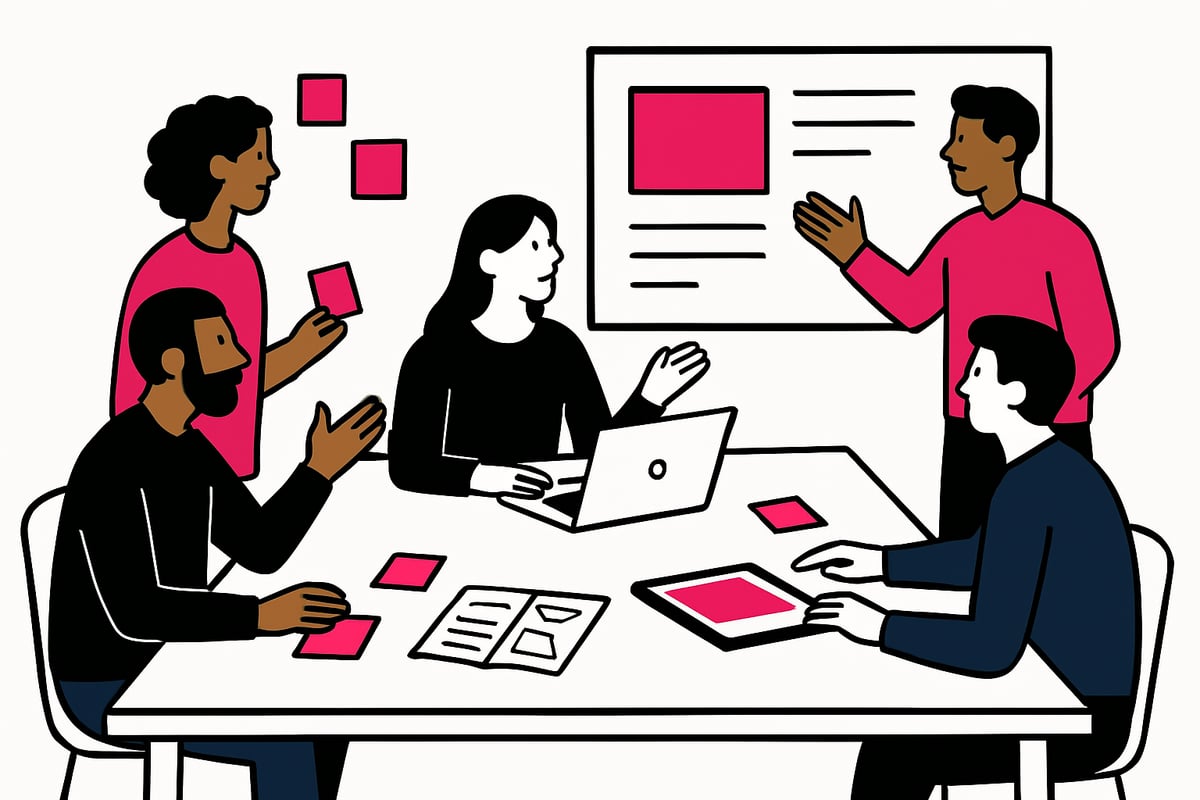
Roles and Responsibilities in Modern Design Teams
To develop design that meets the challenges of 2025, you need the right mix of talent. Modern teams blend creative, technical, and strategic roles, ensuring every angle is covered. Here is a snapshot of the essential roles:
| Role | Core Responsibility |
|---|---|
| Design Lead | Guides vision, ensures quality |
| Strategist | Aligns design with business goals |
| Engineer | Bridges technical feasibility |
| User Researcher | Champions user needs and insights |
| Client/Stakeholder | Provides vision, feedback, and approvals |
Defining roles clearly avoids confusion and keeps everyone accountable. Multidisciplinary teams have become the gold standard for complex projects, as seen in industry leaders who regularly restructure teams for agility.
For more on evolving team strategies, see Perspectives on Design Strategy, which explores how to develop design approaches that drive results.
Fostering Collaboration and Communication
The magic happens when teams unite around a common goal. To develop design that truly stands out, regular cross-functional meetings and transparent documentation are critical. Imagine a project where designers, strategists, and engineers gather weekly, sharing updates and tackling obstacles together.
Best practices include:
- Setting up open feedback loops
- Using digital tools for real-time collaboration
- Encouraging informal brainstorming sessions
Agile methodologies have transformed how teams operate, with those embracing agility reporting higher satisfaction and more successful project outcomes. Collaboration is not just about meetings; it is about building a culture where every voice matters.
Delegation and Empowerment
Empowering team members is essential to develop design solutions that are both innovative and efficient. Delegation is not just about assigning tasks, but about trusting your team to deliver their best work. When leaders focus on strengths and distribute responsibilities thoughtfully, creativity flourishes.
Key tools and processes include:
- Project management platforms for task tracking
- Clear milestones and deliverables
- Regular check-ins to review progress and quality
This approach maintains high standards and ensures projects move forward smoothly. Delegation allows leaders to focus on strategy while team members take ownership of execution.
The Role of the Client and Stakeholders
Clients and stakeholders play a pivotal part when you develop design for long-term success. Their engagement shapes direction and ensures alignment with business goals. Think of a project where the client joins sprint reviews, offers timely feedback, and helps resolve roadblocks on the spot.
Benefits of active stakeholder involvement:
- Faster approval cycles
- Fewer revisions and surprises
- Shared sense of ownership throughout the process
Teams that prioritize stakeholder engagement consistently deliver better results. When everyone is invested, the journey from concept to completion becomes smoother and more rewarding. To develop design that truly resonates, treat clients as partners every step of the way.
Integrating Technology and Tools for Scalable Design
The race to develop design at scale in 2025 feels a lot like assembling a high-performance sports team. Each member brings unique skills, but without the right gear and playbook, even the best players struggle. In today's digital-first landscape, technology is the ultimate playmaker, transforming how teams collaborate, innovate, and deliver results.
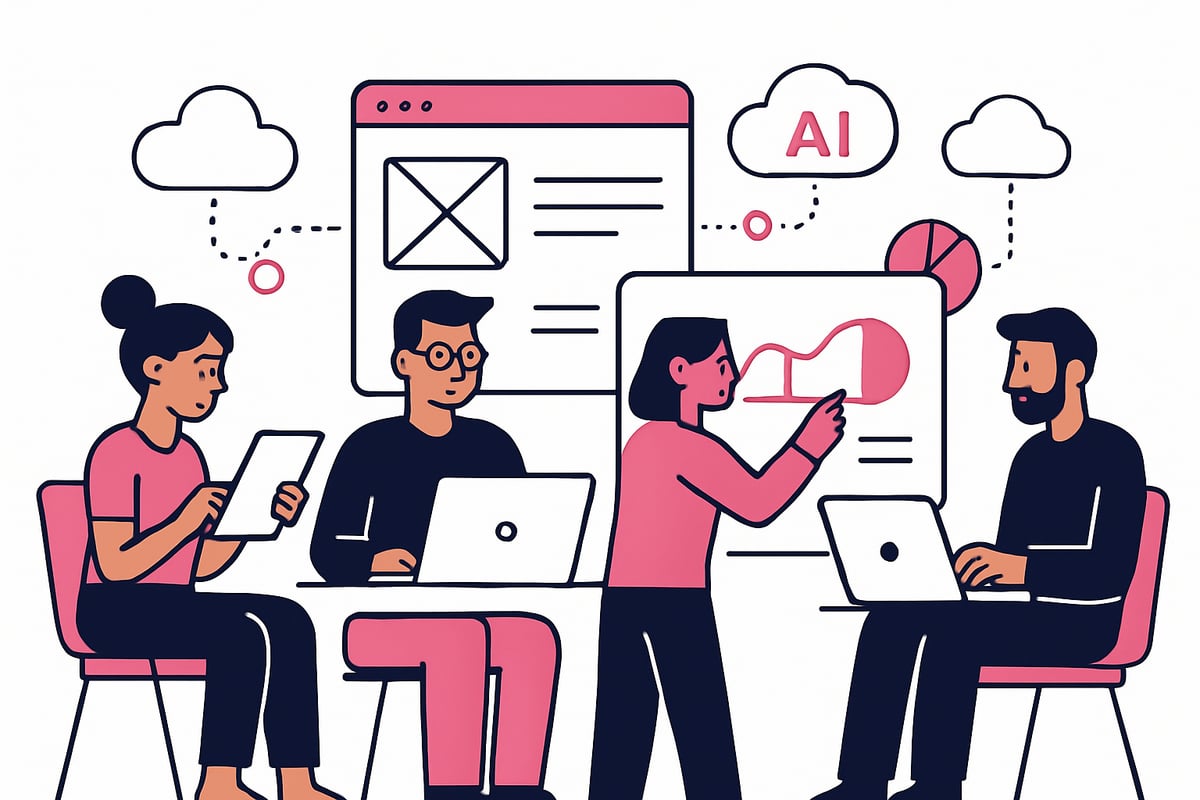
Digital Platforms and Collaborative Tools
Imagine a bustling design studio where ideas flow freely and everyone, from strategists to engineers, works in sync. That magic happens thanks to robust digital platforms. Tools like Figma, Miro, and Slack allow teams to develop design cohesively, no matter where they are in the world.
These platforms create a single source of truth for assets, feedback, and progress. The Digital Style Guide Reference is a perfect example of how digital documentation ensures consistency and clarity across every touchpoint.
Key benefits of collaborative platforms include:
- Real-time co-editing and instant feedback loops
- Version control to prevent errors and confusion
- Centralized asset libraries for brand consistency
When teams develop design using these tools, they move faster and maintain higher quality.
AI and Automation in Design
The age of AI is not science fiction—it's design reality. AI-powered tools are now essential teammates, handling repetitive tasks, generating prototypes, and even suggesting layout improvements. By integrating automation into the process, designers free up time to focus on creativity and strategy.
Over 50% of studios adopted AI automation in 2024, and those that did found their ability to develop design at scale skyrocketed. AI helps spot trends in user data, test dozens of variations in seconds, and predict what resonates with audiences.
Picture AI as your team's silent strategist, always analyzing, always optimizing, always ready to give your design system an edge.
3D Modeling, BIM, and Visualization
Bringing ideas to life in three dimensions is no longer optional for teams aiming to develop design that stands out. 3D modeling and Building Information Modeling (BIM) allow designers, architects, and clients to explore projects before a single brick is laid.
Why does this matter? Because seeing is believing. With BIM, teams catch coordination issues early, reducing errors by up to 20%. Interactive visualizations also make client presentations more engaging and help stakeholders make faster decisions.
These technologies turn abstract concepts into tangible experiences, making it easier to align everyone around a shared vision.
Data-Driven Design Decisions
In the quest to develop design that delivers real results, gut instincts are good, but data is better. Analytics platforms track user behavior, A/B testing reveals what works, and feedback tools capture real-world reactions.
Successful teams use dashboards to monitor key metrics from prototype to launch. They spot bottlenecks, measure engagement, and adjust quickly. This cycle of learning and adapting is what sets thriving brands apart.
By weaving data into every stage of the process, organizations ensure every design decision is informed, intentional, and aligned with business goals.
Ensuring Consistency, Quality, and Impact Across Touchpoints
Consistency, quality, and impact are the backbone of any successful effort to develop design for modern brands. When every touchpoint reflects the same vision, customers notice. Behind the scenes, rigorous systems and careful measurement transform creative ideas into business results.
Creating and Maintaining Robust Design Systems
A robust design system is the secret ingredient that helps teams develop design consistency across every channel. These systems serve as living documents, guiding layouts, typography, colors, and interactions.
Brands that document their systems thoroughly, like in this Comprehensive Brand Book Example, reduce inconsistencies by 40 percent. With clear rules and accessible resources, everyone from designers to developers can deliver work that feels unmistakably on-brand. This approach ensures that as teams develop design assets for new campaigns or platforms, the brand voice never wavers.
Quality Assurance and Documentation
Quality assurance is not just about catching mistakes, but about building trust. To develop design that meets high standards, teams must adopt rigorous documentation and triple-check details.
Competitors recommend systematic reviews for dimensions, annotations, and symbols before any design goes live. Knowledge sharing also plays a vital role. When every detail is recorded and accessible, future projects benefit from past lessons. This cycle of documentation and review creates a safety net, helping teams develop design solutions that stand up to scrutiny and support long-term brand growth.
Measuring Design Success and ROI
How do you know your efforts to develop design are truly working? By measuring key performance indicators (KPIs), teams can connect creative work to real business outcomes.
| KPI | What It Measures | Why It Matters |
|---|---|---|
| User Satisfaction | Customer feedback, NPS | Brand loyalty |
| Engagement Rates | Clicks, shares, time | Content effectiveness |
| Conversion Rates | Leads, sales, sign-ups | Business growth |
| Consistency Score | Brand alignment checks | Quality assurance |
Firms that track design ROI see greater stakeholder buy-in and ongoing investment. When you develop design with clear metrics in mind, it becomes much easier to demonstrate value and secure future resources.
Case Examples of Design Impact
Stories bring the numbers to life. Consider a brand that set out to develop design systems across every touchpoint. Within a year, inconsistencies fell sharply, and revenue jumped by 21 percent, as measured in the Monograph benchmark.
These successes are not isolated. Each time a team chooses to develop design with consistency, quality assurance, and impact in mind, they lay the groundwork for measurable business growth. The lesson is clear: investing in these principles pays off for brands today and in the future.
Future-Proofing Your Design Approach for 2025 and Beyond
The journey to develop design strategies that last is never static. In 2025, the only certainty is change. Businesses must weave adaptability, resilience, and continuous learning into their design DNA to stay ahead. Imagine your brand as a living organism—always learning, always evolving.
Adapting to Ongoing Change and Innovation
Tomorrow’s leaders know that to develop design for the future, teams must embrace ongoing change. The design landscape in 2025 is shaped by emerging technologies, shifting consumer expectations, and global events.
Story after story reveals that companies who prioritize continuous learning and upskilling outperform those who stand still. Teams that encourage curiosity and cross-training are the ones who spot new opportunities first. Imagine a studio where every designer is encouraged to explore new tools or experiment with AI-powered workflows. These environments foster innovation and help develop design approaches that thrive when the unexpected happens.
Embedding Flexibility and Scalability
To develop design solutions ready for tomorrow, flexibility is your secret weapon. Modular, adaptable systems allow your team to pivot quickly—whether responding to a sudden market shift or a new client demand.
For example, brands that invested early in modular design frameworks reported faster project launches and smoother updates. According to 5 Trends Shaping Design in 2025, adaptability and sustainability are defining traits of future-proof design. By building scalable design systems, you give your business the agility to grow and evolve with confidence.
Building Resilient Brand Experiences
Resilience is the backbone of any effort to develop design that endures. During economic downturns or rapid market shifts, resilient brands find ways to stay relevant and trusted.
Take the example of a company that weathered uncertain times by investing in robust digital experiences and clear brand messaging. Their commitment to resilience paid off with stronger customer loyalty and faster recovery. When you develop design with resilience in mind, you create a foundation that supports growth no matter what tomorrow brings.
The Importance of Continuous Feedback and Iteration
The best way to develop design that remains effective is to build feedback into every step. Regular testing, user insights, and rapid iteration help teams catch issues early and refine solutions before launch.
A culture of open feedback and structured review cycles means fewer post-launch surprises. Teams that embrace iteration see higher user satisfaction and lower failure rates. By making feedback a habit, you create a powerful engine to develop design that continuously improves and delivers long-term value.
Key Takeaways for Design Leaders
To future-proof your approach, remember these essentials:
| Strategy | Impact |
|---|---|
| Continuous learning | Drives innovation and adaptability |
| Modular systems | Enable rapid pivots and scalability |
| Resilience focus | Supports brand longevity |
| Feedback loops | Ensure ongoing improvement |
Leaders who develop design as a core business function—and align it with strategy—build organizations that last. Stay curious, empower your team, and make adaptability your guiding principle.
After reading this guide, you can see that developing design for success in 2025 means more than just keeping up with trends—it’s about building a brand from the inside out, with clarity and purpose at every turn. If you’re ready to take the next step and want real insight into how to make your brand not just stand out, but endure, I’d love to hear your story and chat about your ambitions. There’s nothing I enjoy more than helping creative founders unlock what’s essential. Let’s start a conversation—just Email Me.

